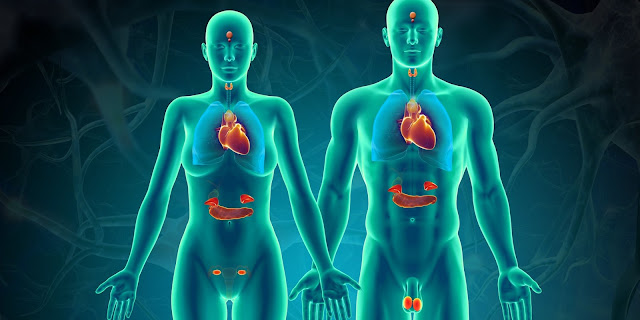Automotive Radar: The Future of Collision Avoidance Technology
Radar technology has come a long way since its initial development during World War II. What was once used primarily for military applications like defense and navigation is now making vehicles safer through innovations in collision avoidance systems. Automotive radar has the potential to dramatically reduce accidents by helping drivers prevent crashes and potentially avoid collisions altogether.
Radar's Role in Collision Prevention
Radar uses radio waves to detect nearby objects like other vehicles. When
installed in cars, radar sensors can identify potential hazards that may be difficult
for human drivers to see, like in low visibility conditions. Automotive radar
monitors a vehicle's surroundings, measuring the distance, angle and velocity
of nearby objects. This data is used by advanced driver assistance systems to
warn drivers of impending collisions and in some cases automatically initiate
emergency braking if the driver does not respond in time.
Common Radar-Based
Systems include forward collision warning, automatic emergency braking,
blind spot monitoring and cross traffic alert. Forward collision warning
systems use radar to track vehicles ahead and sound audible alarms if the
distance closes to unsafe levels without braking by the driver. Automatic
emergency braking takes it a step further by automatically applying the brakes
if an imminent collision is detected and the driver does not respond to
collision warnings. Blind spot monitoring radars detect vehicles entering the
driver's blind spots to alert them before changing lanes, while cross traffic
alert warns of crossing traffic when backing out of parking spaces.
The latest advancements have enabled adaptive cruise control, which maintains a
set following distance behind the vehicle ahead using radar-modulated speed.
Some high-end vehicles are even being equipped with automated emergency
steering that can apply torque to the steering wheel in addition to braking to
steer around or away from collisions. These advanced systems have great
potential to avoid accidents that conventional safety technologies cannot
prevent alone.
Enhancements to Automotive Radar Over
Time
Early automotive radar units had limited range and struggled with factors like
moisture, but technology has improved sensors dramatically. Modern radar can
detect objects over long distances with high resolution even in harsh weather
conditions. Early radar systems operated at 24GHz but newer short-range radars
now use 77GHz frequency bands with narrower beam widths for improved target
separation and tracking abilities. Higher resolutions allow radar to differentiate
between stationary and moving objects with more accuracy.
Advancements in signal processing now give radars object tracking capabilities
that combines measurements over time. Algorithms can reduce noise and identify
true targets versus false detections from things like road surface conditions.
Integrating radar with other sensors like cameras and lidar provides
supplementary data to enhance object classification, determine object type or
identify stationary objects vs vehicles. Sensor fusion improves reliability and
accuracy compared to standalone radar alone. Software defined radar is another
emerging innovation using software configurable electronics for more cost
effective development of advanced radar features.
Manufacturers are also developing smarter radar arrays with beamforming and
channeling capabilities. Beamforming uses phased array antennas to
electronically steer radar beams for a wider field of view without mechanically
rotating sensors. Channelization separates transmit and receive channels for
enhanced interference rejection. Together, these techniques boost performance
in crowded frequency bands and product different operating modes for short and
long range needs within a single compact sensor module.
Overcoming Limitations and Future Potential
While radar has inherent strengths, it also has limitations that newer
technologies help address. Radar accuracy can degrade in rain, snow or fog due
to water droplet interference. Camera and lidar sensors provide visual data
that compensates during poor visibility situations. Environmental factors like
mud flaps may also generate false radar detections that other sensors can
discount. Sensor fusion creates a robust perception system less sensitive to
any single sensor’s weaknesses.
There are also additional opportunities to leverage radar beyond detecting
solid objects. Future vehicular radar could measure road conditions by
detecting surface contaminants from moisture or debris. Traffic monitoring
radars may detect pavement cracking to support predictive road maintenance.
Radar can even potentially sense air quality by detecting particles like dust
or pollution.
As autonomous vehicle technology matures, radar will play an even greater role
in providing reliable sensing abilities required for self-driving capabilities.
Advanced radar with sensing coverage around and above the vehicle will be
crucial for perceiving all potential hazards in complex driving environments.
With higher resolution, onboard processing and additional functionality like measuring
objects through sensor reflections, future automotive radar promises to
revolutionize safety and autonomy. Though still early in development, radar’s
unmatched range and robustness in harsh conditions make it a core technology
for realizing the full potential of collision-free automated transportation.
The last few decades have seen incredible strides in radar technology and its
integration into modern vehicles. What was once a niche application is now
widely recognized as indispensable for collision avoidance and prevention.
Constant technology improvements continue addressing limitations while
enhancing radar's perception abilities. As the automotive industry shifts focus
to autonomous driving, radar will be an essential long-range sensor for
reliable environmental sensing. Its inherent strengths position radar at the
forefront of achieving complete road safety through self-driving vehicles
capable of avoiding all crashes. Automotive radar has come a long way and
promises an even brighter future of collision-free mobility.
Get
more insights on this topic:
https://www.insightprobing.com/automotive-radar-how-it-is-revolutionizing-vehicle-safety/




Comments
Post a Comment